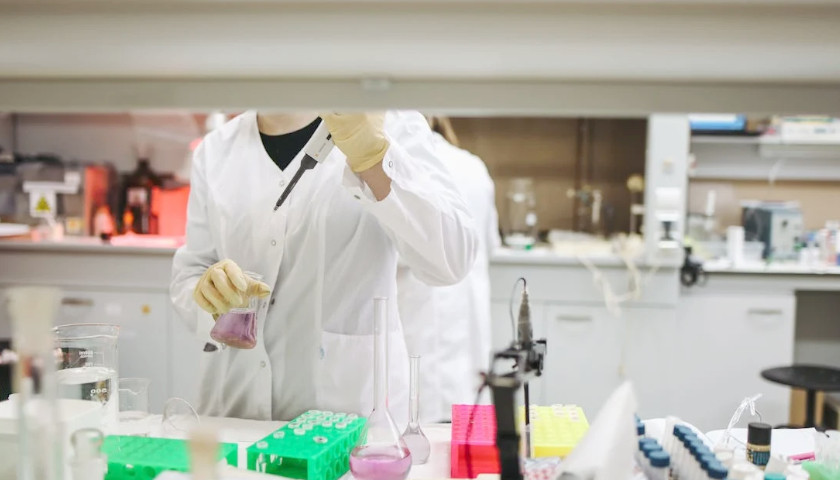by Greg Piper
Fort Collins, Colorado, could have become the next Wuhan, China, with dozens of lab accidents just this decade involving outbreak-prone pathogens in animals including coronaviruses, Zika and tuberculosis, according to a group that fights taxpayer-funded animal testing.
The “incident reports” from Colorado State University’s Institutional Biosafety Committee minutes, obtained by Colorado Open Records Act request, detail 64 lab accidents from 2020 through 2023, the White Coat Waste Project said this week.
The National Institutes of Health chipped in more than $8 million in 2021 and 2023 to build a new CSU bat lab and import bats with Nipah virus and SARS-related coronaviruses via the EcoHealth Alliance, WCW discovered last fall, dubbing the campus “Wuhan West.”
The 2023 grant came months after the Agriculture Department found CSU committed animal cruelty by subjecting rabbits to temperatures above “the humane endpoint” and failed to report “a protocol for [26] rabbits that required the withholding of anesthetics and analgesics for scientific purposes.”
Records obtained by WCW show how @ColoradoStateU–where EcoHealth & NIH are building a new $12M bat lab–had 64 dangerous lab accidents with bats, cats, hamsters & mice that exposed staff to COVID, Zika, rabies, TB & other pathogens from 2020-23https://t.co/ZotUcQoQe4 pic.twitter.com/aepWPVo5Tl
— White Coat Waste Project 🥼🗑️ (@WhiteCoatWaste) March 25, 2024
The National Science Foundation and departments of Energy, Interior and Defense also fund CSU’s bat research, according to WCW, whose stated mission is to cut federal spending that hurts animals and Americans.
CSU is far from alone in preventable lab accidents, according to data from the Federal Select Agents Program, the Daily Mail reported this month. The CDC-USDA program lists more than 600 releases of “controlled” pathogens in the U.S. from 2014-2022, including the mosquito-borne Chikungunya virus and the bacterial infection Q fever.
“This is unacceptable,” the House Select Subcommittee on the Coronavirus Pandemic said at the time. “Let’s improve oversight of these high-risk labs, encourage modernized biosafety standards at home and abroad, and prevent a future pandemic.”
A subcommittee spokesperson said it will have news related to EcoHealth “in the near future.”
Official data reveals that 70-100 lab leaks occur in the U.S. every year.
This is unacceptable.
Let's improve oversight of these high-risk labs, encourage modernized biosafety standards at home and abroad, and prevent a future pandemic.https://t.co/qsoY5QDePZ pic.twitter.com/vta3oazR3y
— Select Subcommittee on the Coronavirus Pandemic (@COVIDSelect) March 19, 2024
The new CSU lab will collaborate with NIH’s Rocky Mountain Laboratories to “assess the susceptibility of bats to Nipah virus and ebolaviruses,” according to a 2021 proposal by CSU’s Arthropod-borne and Infectious Disease Laboratory. Nipah’s case fatality rate for humans is 40-75%, the World Health Organization estimates.
Former National Institute of Allergy and Infectious Diseases Director Dr. Anthony Fauci oversaw RML when it obtained bats from a low-rated zoo near the Camp David presidential retreat to infect with a coronavirus from the Wuhan Institute of Virology, a leading suspect for the SARS-CoV-2 outbreak.
CSU isn’t the only university drawing attention for playing with pathogens. Boston University researchers claimed to create a COVID variant dubbed Omicron S with an 80% fatality rate in 2022.
WCW sued NIH in January for failure to turn over documents relevant to its funding of EcoHealth, WIV and gain-of-function research, “or even acknowledge” several of the Freedom of Information Act requests. At least one NIH claim to have no “responsive records” is belied by a published paper describing RML experiments on bats from the zoo, the suit says.
“The noncompliant EcoHealth Alliance and its partners with long track records of dangerous lab accidents should not be getting more tax money for batty virus experiments,” Sen. Joni Ernst, R-Iowa, said in response to WCW’s latest findings.
Thank you @SenJoniErnst for leading efforts in Washington to ensure that taxpayers aren't forced to fund dangerous animal experiments that waste $ & can cause pandemics!
More: https://t.co/ZotUcQoQe4 pic.twitter.com/UnEDgvswOi
— White Coat Waste Project 🥼🗑️ (@WhiteCoatWaste) March 25, 2024
She’s leading efforts to defund EcoHealth and gain-of-function research – the risky process of genetically altering or enhancing an organism to better understand how emerging infectious diseases might spread.
“Lab leaks are inevitable, and we don’t want the next outbreak to happen in our own backyard or near our military bases,” Ernst said.
“This is ridiculous” that the CSU accidents became known only through WCW’s public records request “and once again underscores a disturbing lack of transparency,” said Biosafety Now cofounder and Rutgers University genetics professor Bryce Nickles. “Public reporting of lab accidents should be standard practice, not an issue up for debate.”
CSU and NIH didn’t respond to queries.
The 64 accidents in the IBC minutes include a mosquito researcher with “cold symptoms and a rash” that was confirmed to be Zika, likely from a “mosquito bite that went undetected during a chaotic time due to COVID-19 shut downs and changes,” only after the person was cleared to return to work.
Several involved animals biting or scratching staff wearing too-small or too-thin gloves: COVID-infected hamsters, rabies-infected cats “wanting to play,” bats that were uninfected or vaccinated against Middle East Respiratory Syndrome Coronavirus and “challenged with MERS-CoV,” and mice infected with TB or chronic wasting disease, which the Cengers for Disease Control and Preventionsays has no reported cases in humans but could be a human risk.
"The number of labs studying the deadliest…pathogens has increased dramatically since SARS-CoV-2…was first identified in 2019. There were 51 Level 4 labs in 27 countries as of last year, roughly double the number 10 years ago"
BSL-4 lab for Saskatchewanhttps://t.co/8t0ZgFOaks pic.twitter.com/BDe804cGgl
— Richard H. Ebright (@R_H_Ebright) March 26, 2024
When a researcher missed a vein on a TB-infected mouse, the “buildup of pressure” caused phosphate-buffered saline in the syringe and “possibly some of the blood from the mouse” to splatter on the researcher’s face.
They washed their face and eyes and returned to work before coworkers told them to leave and follow the correct protocol of “shower[ing] out and wash[ing] their face/eyes for 15 minutes.”
Another researcher jabbed their finger “with a dissection needle while performing a necropsy on an animal” with a wild influenza virus that “has not been shown to infect humans.”
The phrase “protocol breach” appears in several incident reports. “An individual forgot to don an N95 when entering to dust the deer facility,” realized the blunder at an unspecified time, exited to don the mask and came back in, one reads.
Another involved an “autoclaved biohazard bag that was found outside on the path between two buildings on main campus with mice carcasses in it.”
An unusually high seven incidents, including the Zika infection, N95 blunder, and a hamster bite, are listed for the May 2020 minutes.
The report theorizes “an increase in stress due to COVID-19 situations both at home and at work” is responsible, and the “mandate to be on campus as little as possible for critical research functions … may be causing people to rush.”
Switching from N95 to powered air-purifying respirators “in these environments can interfere with peoples’ normal functioning” and is causing backups as people enter and exit “to allow social distancing in the locker rooms.”
The committee suspects that “people may be hesitant to come forward because they do not want to have already restricted research limited further.”
– – –
Greg Piper has covered law and policy for nearly two decades, with a focus on tech companies, civil liberties and higher education.





